12 Interesting Marco Polo Facts For Kids [Fascinating Facts]
Marco Polo was a Venetian merchant and explorer. He went from Europe to Asia between 1271 and 1295, spending 17 years in China. Polo’s forebears, particularly Marco Polo’s father Niccolo and his uncle Maffeo, paved the road for him through their pioneering endeavors. The family had engaged in extensive trade with the Middle East over the years, amassing enormous riches and renown. Although it is unclear if the Polos were of noble origin in Venice, a city with republican and commercial traditions, the issue was of little consequence.
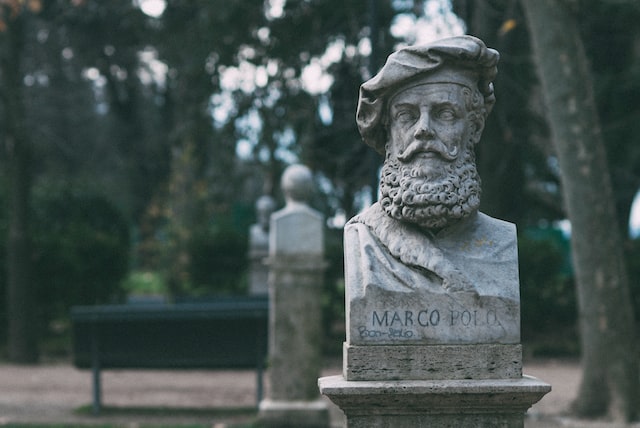
Learn more about kids Marco Polo facts.
12 Fascinating Marco Polo Facts For Kids
1. Marco Polo was a teen traveler.
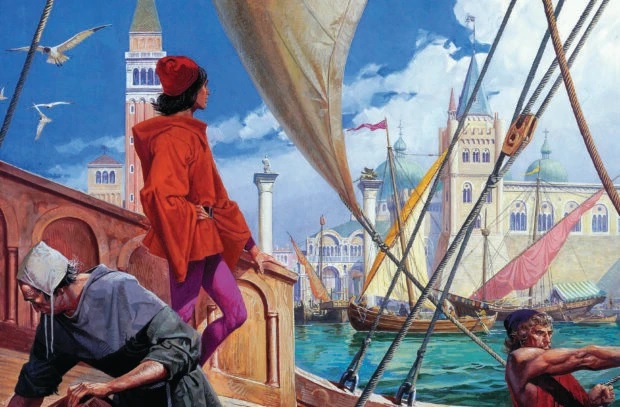
Image Source – https://www.historyextra.com/
Marco Polo was still a novice traveler and merchant when he embarked on his epic adventure through the east. Marco was raised in Venice and took an interest in business trade from his father, Niccolò Polo, and his uncle Maffeo. Niccolo Polo, Marco’s father, abandoned his home in Venice and his pregnant wife to journey to Asia with his brother Maffeo Polo just before Marco was born. He only returned to Venice in 1269 first to see Marco. The three of them set out on a long voyage to Asia. At 17, Marco left his house with his father, Niccolo, and his uncle Maffeo in an attempt to travel to the court of Kublai Khan in Asia.
2. In 24 years, Marco Polo covered more than 15,000 miles.
At 17, Marco Polo left his family and didn’t come back to Venice for 24 years. He traveled over 15,000 miles on land along the Silk Road and by water, passing through areas of Asia and visiting the Alaskan coast hundreds of years before Vitus Bering. The Polos were initially refused permission to leave China by Kublai Khan on multiple occasions because he enjoyed their company. He eventually gave in around 1291 and assigned the Polos their final task: accompanying Kököchin, a Mongol Empire princess who would marry Arghun Khan, to Persia. After leaving the princess, the Polos next traveled by land to Constantinople. They later chose to go back to their home.
3. Marco Polo took four years to travel to China.
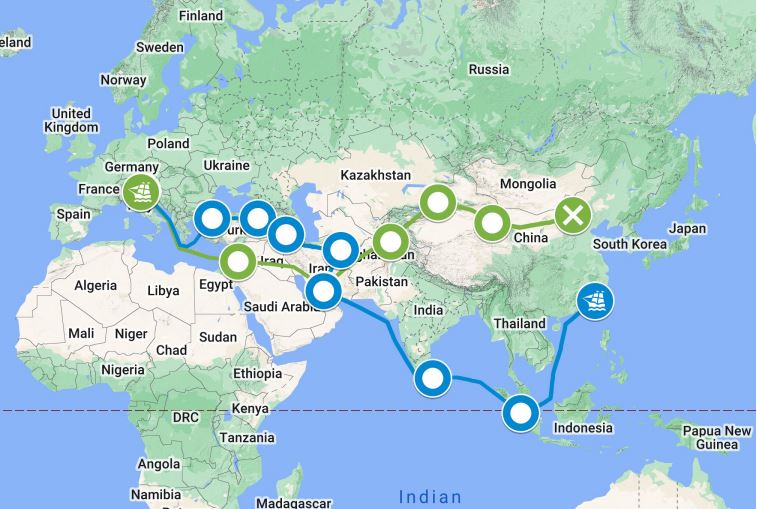
Source – https://exploration.marinersmuseum.org/event/marco-polo-interactive-map/
From Venice, Marco Polo, along with his father and uncle, set sail for the Holy Land while traveling across the Mediterranean. The journey lasted three or four years and was full of challenges and excitement. The most they could do to fulfill Kublai Khan’s request was to bring two friars, but after experiencing the hardships of the road, the friars decided against going.
Due to severe sickness, Marco Polo was compelled to seek sanctuary in the highlands of northern Afghanistan for a considerable amount of time. Polo claimed that there was “absolutely nothing to eat” in the Gobi Desert. However, young Marco Polo had a deep sense of adventure and curiosity and was fascinated by the sights, sounds, and cultural events around him while keeping him moving.
4. Marco Polo wrote his famous book “The Travels of Marco Polo” in jail.
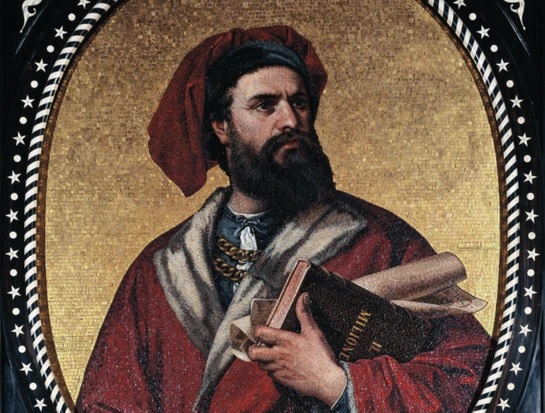
Image Soure – https://www.historyextra.com/
In 1295, Marco Polo returned to Venice bearing jewels created from his wealth. In a conflict in 1296 between Adana and the Gulf of Alexandretta, he was possibly captured by the Genoans. To enter the battle, Polo armed a galley with a trebuchet. During his imprisonment, he wrote a lengthy description of his travels to another prisoner, Rustichello da Pisa.
The Travels of Marco Polo quickly spread throughout Europe in manuscript form. The adventures of the Polo family through Asia are portrayed, providing Europeans with their first thorough understanding of the inner workings of the Far East, including China, India, and Japan. Among the intriguing aspects of this historical journey, the Marco Polo portrait also captures the face behind the remarkable tales, offering a visual connection to his captivating narrative.
5. Marco Polo brought Paper Money to Europe.
In a section of his “Travels,” titled “How the Great Khan causes the bark of trees, made into something like paper, to pass for money all over his country,” Marco Polo described the invention of paper money as a novel concept for western civilization. The Mongol dynasty used paper money long before Europe started printing its notes. In his description of the unusual form of cash, Marco Polo jokingly compared Kublai Khan to an alchemist who could turn mulberry bushes into money rather than base metals into gold. He explained how Kublai Khan’s subjects treated paper money as though it were as valuable as gold or silver and the measures that were taken to prevent it from being counterfeited.
6. Marco Polo introduced a variety of foods to Europe.
According to legend, Marco Polo brought pasta to Italy in the 13th century. Although the truth of that tale has long been disputed, Polo encountered some unique delicacies. When Marco Polo lived, ginger was much more expensive and scarcer than it was during the Roman Empire, when the Romans commonly utilized it. However, he discovered countless quantities of expensive spices while traveling for almost nothing. Additionally, he mentions an early power shake even though, contrary to what some sources claim, he may not have also brought ice cream to Europe. According to legend, the Mongols dried milk and added water to it when they went riding. The liquid would churn while carried in the flask, producing a thick syrup.
7. Marco Polo has a pool game named after him.
Although this game was created in the 1960s and is based on Marco Polo, no one seems to genuinely know where or when the first Marco Polo game was played. Marco Polo is a pool game and can be played with as many players as you choose! There is usually one individual who is “it,” and they continuously exclaim “Marco!” while keeping their eyes closed. As “Marco,” a blind player, searches the pool for the other players while they are saying “Polo,” he is blind. To win the game, you must pronounce “Polo” without being tagged by “Marco.” The game is called Marco Polo because people believed the traveler didn’t know where he was going, just like the blind player in the game.
8. People believed Marco Polo’s book was fictional.
Even though there is no authoritative edition of Polo’s book, many of his claims have been corroborated by historians and researchers. Most people agree that he recorded what he could accurately. However, some accounts are likely based on people he met along the road. However, Polo adhered to the rules, established a business, married, and had three kids. When visitors pressed Polo to acknowledge that the book was fiction while he lay dying in 1324, he famously said, “I have not told half of what I saw.”
His book reveals comprehensive details about the currencies, including paper money. He refers to the burning of coal. His salt production and sales data demonstrate his careful acquaintance with the subject. His account of China’s Grand Canal is remarkably accurate. The idea that he didn’t go to China does raise more questions than it provides answers.
9. Marco Polo was among the first Europeans to see a Rhinoceros.
Polo was the first person in Europe ever to see a Rhinoceroses. He mistook them for unicorns, though. In the 13th century, according to European belief, unicorns were thought to be horned, horse-like creatures that could only be tamed and captured with the aid of a young woman. The animal’s description by Marco Polo disproved that superstition: Polo asserted that unicorns weren’t peaceful, lovely creatures drawn to the good-hearted. They had feet like elephants, a head like a wild boar, and a black horn in the center of their foreheads. They were hideous and terrifying. Polo told his readers that unicorns mostly enjoyed rolling about in the muck and dirt and biting people with their sharp tongues. Historians now understand that Polo described the rhinoceros when he described the “unicorn” in his writing.
10. Marco Polo received a Gold Plaque from Kublai Khan to ensure a safe journey back to Venice.
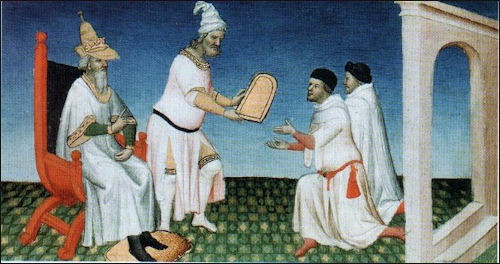
Image Source – https://humancircuspodcast.com/
Kublai Khan had grown so devoted to the Venetian trader that he refused Marco Polo’s plea to cease his travels and return home. In his narrative, Polo asserted that in addition to reaching Kublai Khan’s court in Shangdu, he became close friends with the emperor and served as both his right-hand man and counselor. Polo persuaded Kublai Khan to release him in exchange for aiding the emperor’s grand nephew during a naval voyage. Polo was given a golden tablet of safe conduct by the emperor, which would assist him in safely gathering supplies on their journey and letting everyone know that he was under the emperor’s protection.
11. Marco Polo has a sheep named after him.
A subspecies of argali sheep known as the Marco Polo sheep bears Polo’s name. They were given the name Ovis ammon polio in 1841 by biologist Edward Blyth in honor of the great explorer Marco Polo. The distinctive characteristics of Marco Polo sheep include their size and swirling horns. Their natural habitat is in the Central Asian mountains. They have a “near threatened” conservation category, and measures have been taken to preserve their population and prevent hunting. Additionally, it has been proposed that breeding them with domestic sheep would be advantageous for agriculture.
12. Marco Polo believed in the power of magic and evil spirits.
Marco Polo was superstitious because he lived in superstitious times. He recounts the stories and rumors he hears as fact throughout his book, along with his first-hand accounts of magic. Polo talks about visiting astrologers at the court of Kublai Khan who could control the weather and magicians who could make wine flagons levitate during feasts. Polo says in a passage that it is common knowledge that evil spirits are said to stalk the Gobi Desert, tormenting travelers with illusions and calling their names to divert them from their course. This is likely a reference to the genuine phenomenon known as the “singing” sands of the Gobi.
Conclusion
The facts mentioned above only scratch the surface of Marco Polo’s adventure-filled life. He traveled around the globe at a time when most of the planet was still a mystery and without the means of transport that we have today. He introduced the world to new things through his travels and opened up plenty of possibilities.
